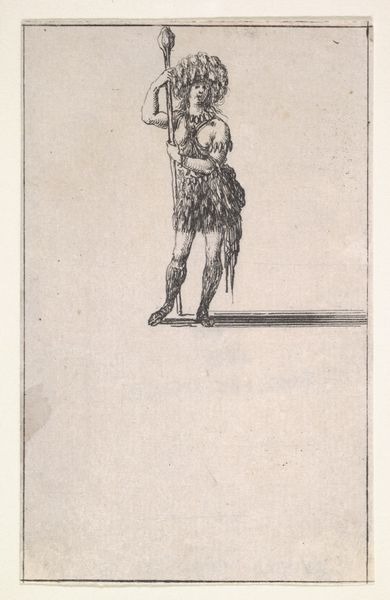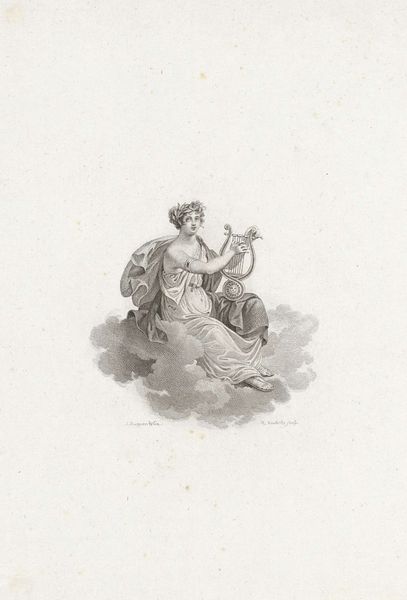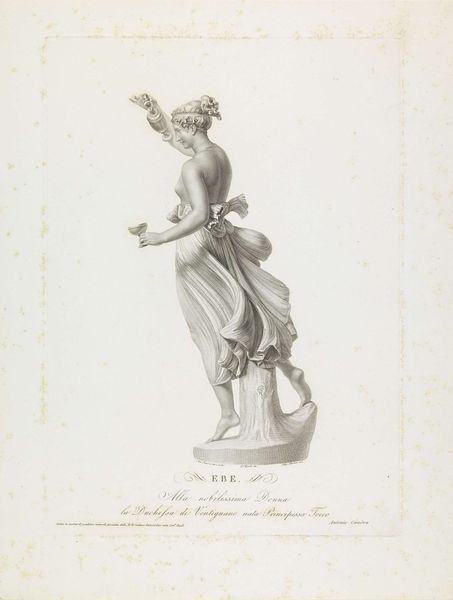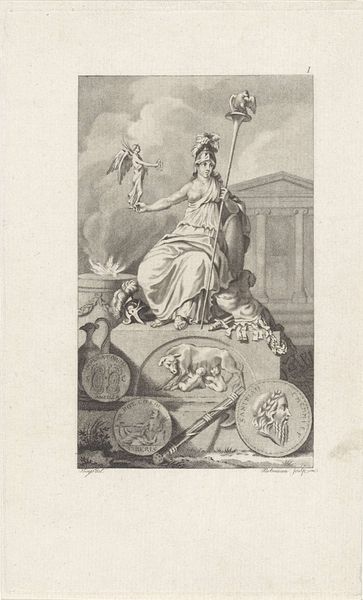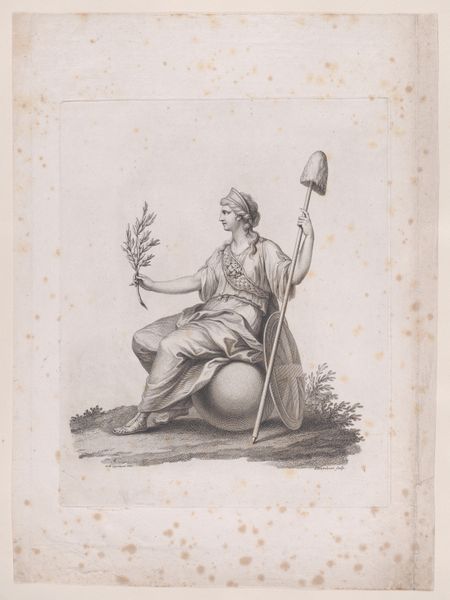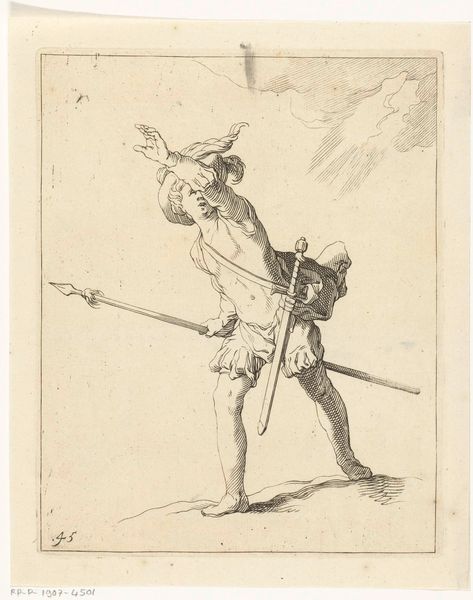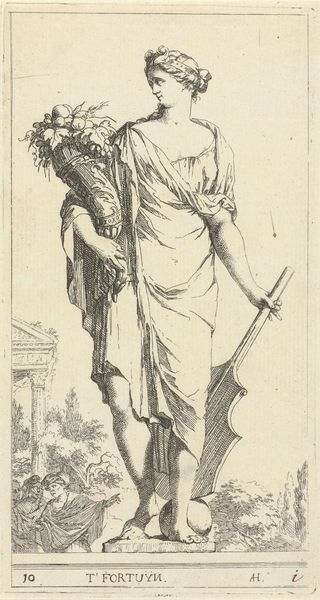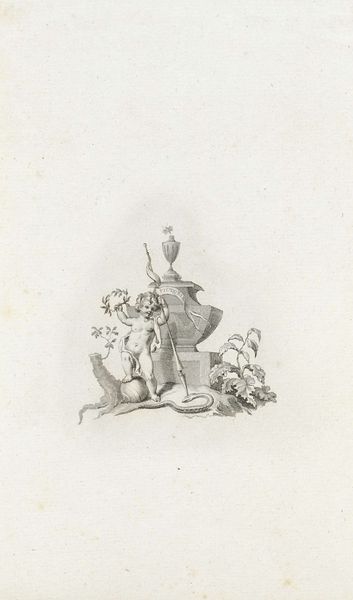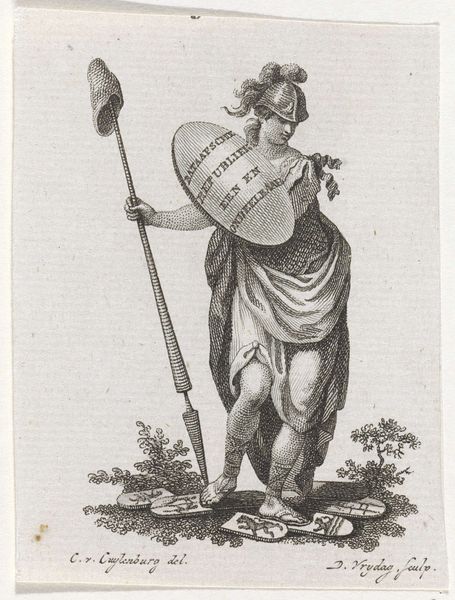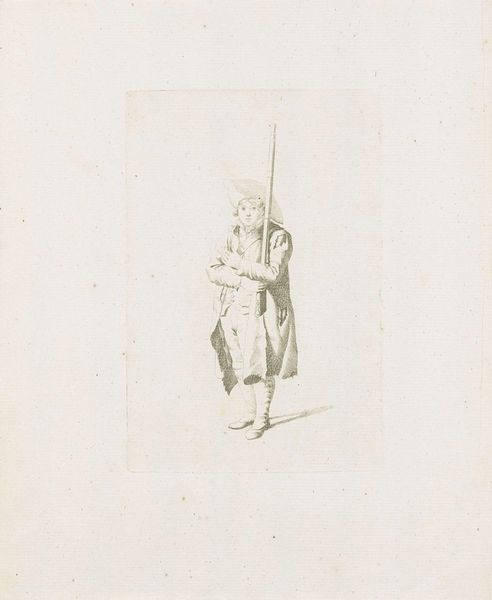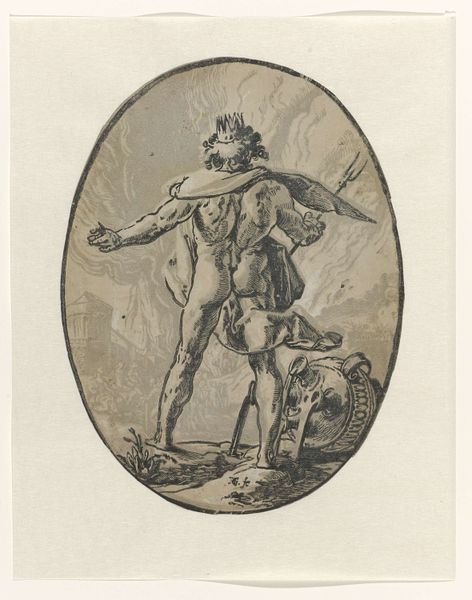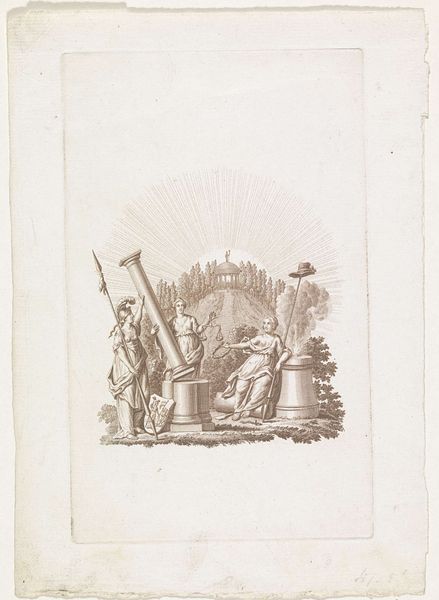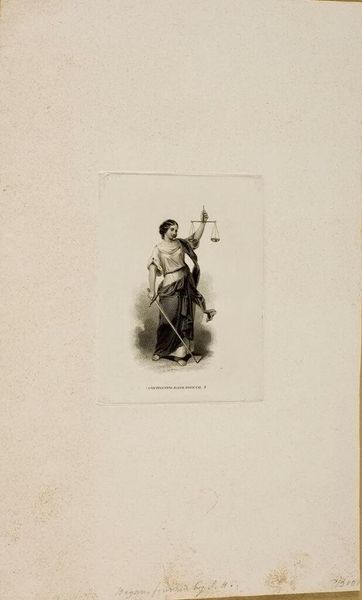
Vignet met de personificatie van Vrijheid zittend op wapens 1751 - 1816
0:00
0:00
print, engraving
#
portrait
#
neoclacissism
#
weapon
#
allegory
# print
#
classical-realism
#
figuration
#
geometric
#
line
#
history-painting
#
engraving
Dimensions: height 238 mm, width 155 mm
Copyright: Rijks Museum: Open Domain
Curator: Well, the first thing I see is a rather confident woman perched atop a pile of weaponry, almost like she’s conquered…laundry day? Is it just me or does this feel a bit performative, you know, freedom as a staged event? Editor: Reinier Vinkeles created this engraving, titled "Vignet met de personificatie van Vrijheid zittend op wapens," sometime between 1751 and 1816. There is certainly some stagecraft in the Neoclassical style. Yet the symbolic density goes far deeper. Curator: Neoclassical alright – you've got that stiff upper lip vibe going on. But tell me, what’s with the mountain of discarded arms? I mean, if freedom's so great, why does it need a throne made of leftovers from war? Is it suggesting a slightly less utopian victory? Editor: Precisely! Weapons, flags, and armor form the foundation, connoting that Liberty emerges from conflict or even triumphs over it. The Phrygian cap atop the pole symbolizes emancipation, but the other symbolic objects point towards deeper issues that involve free will and justice, especially given its date of production that coincided with vast sociopolitical transformations across the Western World. Curator: Ah, so it’s not just a party trick but a complex stew of power, war, and liberation served with a side of high-society pomp? I almost missed the geometric object in her hand. Is that what I think it is? Editor: The object in her right hand could allude to Masonic symbolism. The image employs a visual vocabulary from across political and esoteric sources that would have held very strong symbolic valences to its intended contemporary audience. Curator: I'm now feeling a strange mix of inspired and utterly exhausted at the weight of all the historical expectations loaded into this image. Do you think anyone looking at this back then just saw… art, or were they immediately decoding it like a secret message? Editor: Given the historical context, I believe viewers likely approached the piece as both art and a coded political statement, recognizing its complex layers of meaning—which in itself might offer a nuanced reflection of the concept of "freedom". Curator: What a wonderfully ambiguous representation of "freedom" through subjugated conflict... something to keep in mind next time someone throws that word around too lightly.
Comments
No comments
Be the first to comment and join the conversation on the ultimate creative platform.
